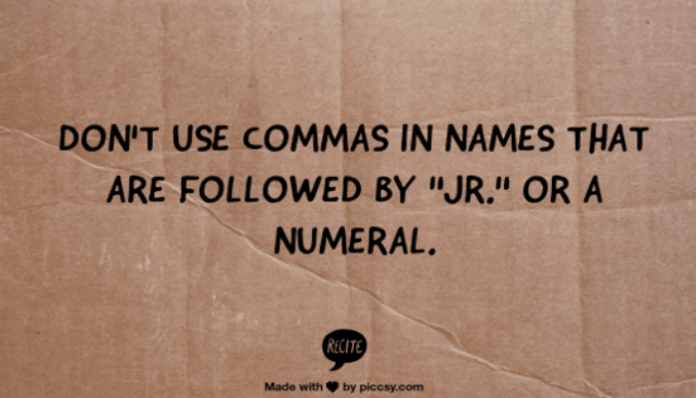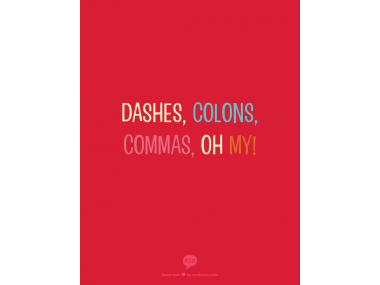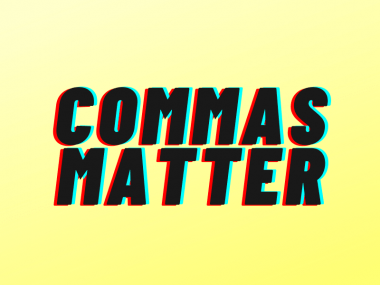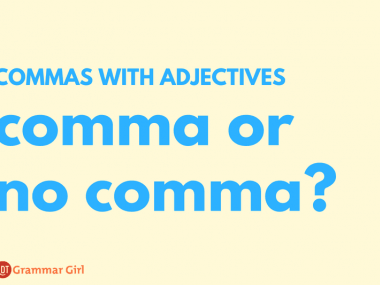Do You Need a Comma Before “Jr.”?
People were more likely to put a comma before Jr. in the past than they are today. Find out which styles require you to use the comma and which styles forbid it.

In the United States, we celebrate Martin Luther King Jr. Day on the third Monday in January—at least that’s the common name for the occasion. According the US Government Printing Office Style Manual, the official name of the holiday is Birthday of Martin Luther King, Jr.
Writers have to contend with that tricky Jr. on the end of the name either way. Should you put a comma before it or not? You see it both ways. One reason is that the official name includes a comma, but many of the major style guides omit the comma from the holiday name and say to omit commas before Jr. in names in general.
Do You Need a Comma Before Jr.?
For example, the Associated Press says not to use a comma before designations such as Jr. and Sr. and specifically does not include a comma in the name Martin Luther King Jr. Day.
The Chicago Manual of Style gives the same advice on both fronts.
You Can Write III or 3rd
If someone is referred to as “the third,” you can use either the Roman numeral (III) or the Arabic numeral (3rd) after the name. When speaking a name, you say “the third,” but when writing a name, you don’t include the word the before the numeral.
- Thurston Howell III
- Thurston Howell 3rd
- John Kennedy Jr.
Labels Are Only Used With Full Names
Jr., Sr., III, and so on are only used when you’re writing someone’s full name. In publications, for example, you shouldn’t refer to Bobby Jr. or Mr. Smith Sr. unless you are quoting someone who referred to Bobby or Mr. Smith that way.
What to Do if Someone’s Nickname Is Junior
If a person uses Junior as his name, instead of abbreviating it, write it capitalized as a full word—just like a name or any other nickname.
Don’t Put a Comma Before Jr.
Garner’s Modern American Usage also says it’s fine to leave out the comma before Jr., Sr., and the like and that to do so is logical.
Other Etiquette Rules About Jr., Sr., and Other Labels
Garner’s has nearly three full columns reviewing the rules and etiquette that govern these labels, and there was a lot I didn’t previously know. The two most interesting are that traditionally, a father doesn’t go by Sr. Instead, he gets to just use his name, and then the son is supposed to be the one who gets a special call-out as Jr.
Once the father dies, again traditionally, the son drops the Jr. label and simply uses his name. In other words, Thurston Howell III would only be “the third” if his father and grandfather are alive. But as Garner notes, the traditional etiquette rules are often ignored these days. You should read the entire section of Garner’s if you have access to the book. It’s fascinating.
It was definitely the style in the past to use a comma before Jr., and that’s probably why the official name of the Birthday of Martin Luther King, Jr. includes a comma, but things have changed and current styles widely favor leaving out the comma. When I wrote about this a few years ago, I got a lot of mail from people who objected to leaving out the comma, and I wrote a follow-up that said that although leaving out the comma is the current style prescribed by the major style guides, I’m OK with people being able to determine how their own name is formatted.
Why Publications Follow Styles Instead of Doing What People Want
I’m not a very combative editor, so I still probably wouldn’t fight you about it, but Jonathon Owen, an editor who blogs at Arrant Pedantry, made a compelling case about why people shouldn’t be allowed to insist on a comma when the style says to leave it out. His main point is that punctuation is different from spelling—that spelling can vary from name to name and is, in a way, the essence of the name, but that punctuation is just a formatting issue that should follow standard conventions. I was persuaded.
In short, the general modern style is to write names such as Martin Luther King Jr. without the comma—that’s what you should see in private newspapers and websites—but if you write for a government publication or website that follows USGPO style, you should still include the comma before Jr.
References
Garner, B. “Jr.; Sr.; III; Etc.” Garner’s Modern American Usage, 3rd edition. Oxford University Press. 2009. p.555-6.
“Holidays.” The Chicago Manual of Style Online, 16th edition. 8.88. The University of Chicago Press. https://www.chicagomanualofstyle.org/16/ch08/ch08_sec088.html (subscription required. accessed January 11, 2015).
“‘Jr.,’ ‘Sr.,’ and the like.” The Chicago Manual of Style Online, 16th edition. 10.19. The University of Chicago Press. https://www.chicagomanualofstyle.org/16/ch10/ch10_sec019.html (subscription required. accessed January 11, 2015).
“Martin Luther King Jr. Day,” AP Stylebook Online. Associated Press. https://www.apstylebook.com/online/?do=entry&id=1827&src=AE (subscription required. accessed January 11, 2015).
“Names of holidays, etc.” U.S. Government Printing Office Style Manual Online. 3.24. U.S. Government Printing Office. https://www.gpo.gov/fdsys/pkg/GPO-STYLEMANUAL-2008/html/GPO-STYLEMANUAL-2008-5.htm (accessed January 11, 2015).





